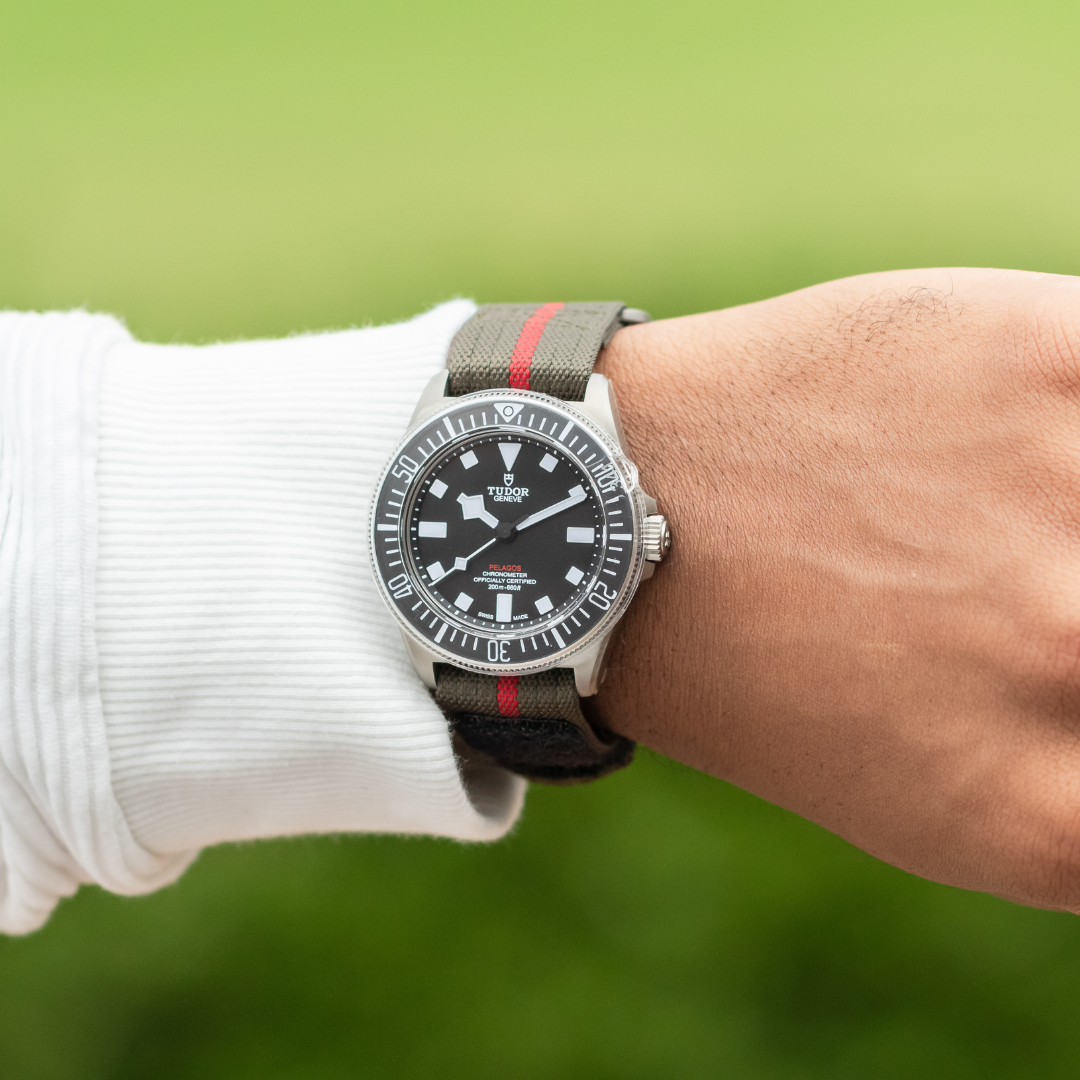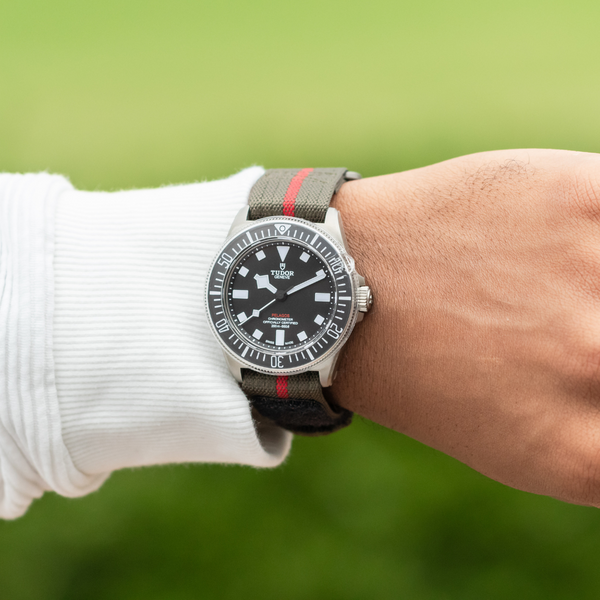
Isn’t it amazing the watches you see on the wrists in magazines always fit perfectly? If you have the perfect wrist of a perfect model, read no further. But, if you are like 99.8% of the rest of us, this handy guide will help you choose the right watch for you.

The Minimums and Maximums
Different types of watches are made to fit differently. When sizing your wrist, you’ll get two numbers: Your minimum size and your maximum size.
The minimum size will guide you when looking at dress watches, vintage watches, and field watches. These watches are designed smaller and made for a subtle fit.
On the other hand, if you’re shopping for larger watches like a pilot’s watch, digital/tactical watch, or diving watch you’ll want to look at your maximum size. These watches are meant to be noticed. They’re made bigger and made to be worn big!
How to Size My Wrist
This part is easy (even if there’s some math involved). To calculate your wrist size for a watch, simply measure the circumference in millimeters and divide it by 3. This number will roughly be the flat surface of your wrist.
How to Measure a Watch Case Size
Measurements for a watch case is done by measuring the case with a set of calipers. The case size, as the name suggests, is only the case and does not include the crown.
The Lug-to-Lug Difference
When you see the “lug-to-lug” size, this is referring to the size of the watch from the outermost part of the lugs. To choose the right size involves a little more math (but you can get away with eyeballing it). Look for a lug-to-lug distance that is about 75 to 95% of the width of your wrist. Another consideration is whether the lugs are flat or curved. This will play a role in how the watch lays on your wrist.
The Hour Markers Circle
The size of the hour markers circle can play tricks with your eyes. As the name suggests, this is the part of the watch that does the business of telling time with the hands and markers. When the hour marker circle is smaller, it will make the watch seem smaller (and vice-versa). While the size of the case doesn’t change, this little optical illusion can give the appearance of a watch that is larger or smaller.
The Bezel
The bezel, or ring that holds the watch crystal in place, is another element that affects the look of the size. When a watch has a larger bezel, it also means it will have a smaller hour markers circle. As mentioned above, this might make the watch seem smaller. While some bezels are merely ornamental, two common types of bezels have a specific function. One is a rotating bezel, often found on dive watches, that count the elapsed time underwater in increments of 5. Another is a tachymeter which gives drivers an indication of how long it takes to drive one mile.
The Chapter Ring
Similar to a bezel is a chapter ring. These are found under the crystal and are usually adorned with hash lines indicating 5, 10, or 15-minute marks. Some chapter rings are fixed, while others rotate. You’ll find the size of the chapter ring can have a similar impact on the appearance of the size of your watch.
Dial Color: Dark vs. Light
If the style of watch you’re looking at comes with either light or dark dials, try them both on. Many find that watches with a darker colored dial appear smaller when worn. Which kind you choose is personal preference, but always good to consider how it may appear to others when you’re wearing it.
Case Thickness
This is another factor that impacts how your watch “appears.” Simply put, a thinner watch case will appear smaller. Surprisingly, the difference isn’t all that dramatic. Things like lug-to-lug distance, hour markers circle, and dial color tend to make a more visible difference.
Choosing the Right Sized Watch
The simplest way to choose the right size watch for you is to compare your wrist size to both the case size and lug-to-lug distance. Our best rule of thumb is to choose a case that’s about 60-75% of your flat wrist width (see above) and a lug-to-lug distance somewhere between 75 to 95% of your wrist width.
An even better way to choose is to stop in to any of our locations and try a few watches on! Our professionals will be happy to give you advice and show you options that will look great on your wrist.


